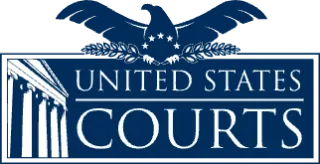The Judiciary’s funding shortfalls could get worse in the coming year, and the effects would be especially severe if federal courts must operate under another full-year continuing resolution, the Judiciary’s policy-making body was told.
Judge Amy J. St. Eve, Budget Committee chair, told the Judicial Conference of the United States that, in light of funding constraints in Congress, Judiciary funding for the upcoming fiscal year will likely be far below the $9.4 billion discretionary appropriations request to Congress for FY 2026.
The Judiciary’s funding has been a source of growing concern in recent months. In May, St. Eve and Judge Robert J. Conrad, Jr., director of the Administrative Office of the U.S. Courts, testified at a congressional hearing. They noted that the court security program was challenged by the constraints of a full-year continuing resolution, given the dynamic and very active threat environment that is driven by workload for the program.
In June, St. Eve and Judge Michael Y. Scudder, IT Committee Chair, testified at a congressional hearing and emphasized that the Judiciary’s ability to continue momentum on cybersecurity and IT modernization is wholly reliant on sufficient and consistent funding to continue planning and executing these high-priority initiatives.
In July, the Judiciary announced that funding had run out to reimburse panel attorneys – private lawyers who are appointed by the court to represent indigent defendants. The Judiciary currently estimates that $76 million in payments will have to be deferred until the new fiscal year begins Oct. 1, unless Congress provides supplemental appropriations.
On Sept. 3, the House Appropriations Committee approved its version of the FY 2026 Financial Services and General Government appropriations bill, which would provide the Judiciary with $8.9 billion in discretionary appropriations for FY 2026. This funding level would be a $306 million (3.5 percent) increase above FY 2025, but $494 million below the Judiciary’s request for FY 2026. The Senate has not yet scheduled a markup of the Judiciary’s appropriations bill for FY 2026.
At the House level, the Defender Services account would receive a $120 million increase but $196 million below the FY 2026 request. Funding at the House level would require the Defender Services program to downsize by over 600 positions from the FY 2025 financial plan level; defer panel attorney payments for 77 days, beginning around June 11, 2026, which would be the longest deferral in the history of the program; or some combination of these measures. Reductions of this magnitude would inhibit the Defender Services program from meeting its constitutionally mandated mission.
The Court Security program would receive the full request level of $892 million in the House bill which would enable the Judiciary to make critical security investments following two years of flat funding.
The Salaries and Expenses account that funds court operations nationwide would receive a $74 million increase in the House bill targeted for cybersecurity and IT modernization, but the account overall would be underfunded by $271 million from the request. This will require steep cuts to funding for clerks of court and probation and pretrial services offices and centrally managed programs.
As FY 2026 approaches, Judiciary leaders will continue to advocate strongly to Congress for full funding of its FY 2026 budget request, but are also contingency planning for a full-year continuing resolution. This would freeze Judiciary funding at $8.6 billion in discretionary spending, the same level as FY 2025. For most Judiciary accounts this would be the third straight year without any increase. St. Eve told the Conference that a full year of flat funding would be approximately $800 million less than the Judiciary requires.
The 26-member Judicial Conference is the policy-making body for the federal court system. By statute, the Chief Justice of the United States serves as its presiding officer and its members are the chief judges of the 13 courts of appeals, a district judge from each of the 12 geographic circuits, and the chief judge of the Court of International Trade.
The Conference convenes twice a year to consider administrative and policy issues affecting the court system, and to make recommendations to Congress concerning legislation involving the Judicial Branch.
Subscribe to News Updates
Subscribe to be notified when the news section is updated.
